In the spotlight this time: the mobile Austrian post office based on the Mercedes-Benz O 10000 bus from 1938.
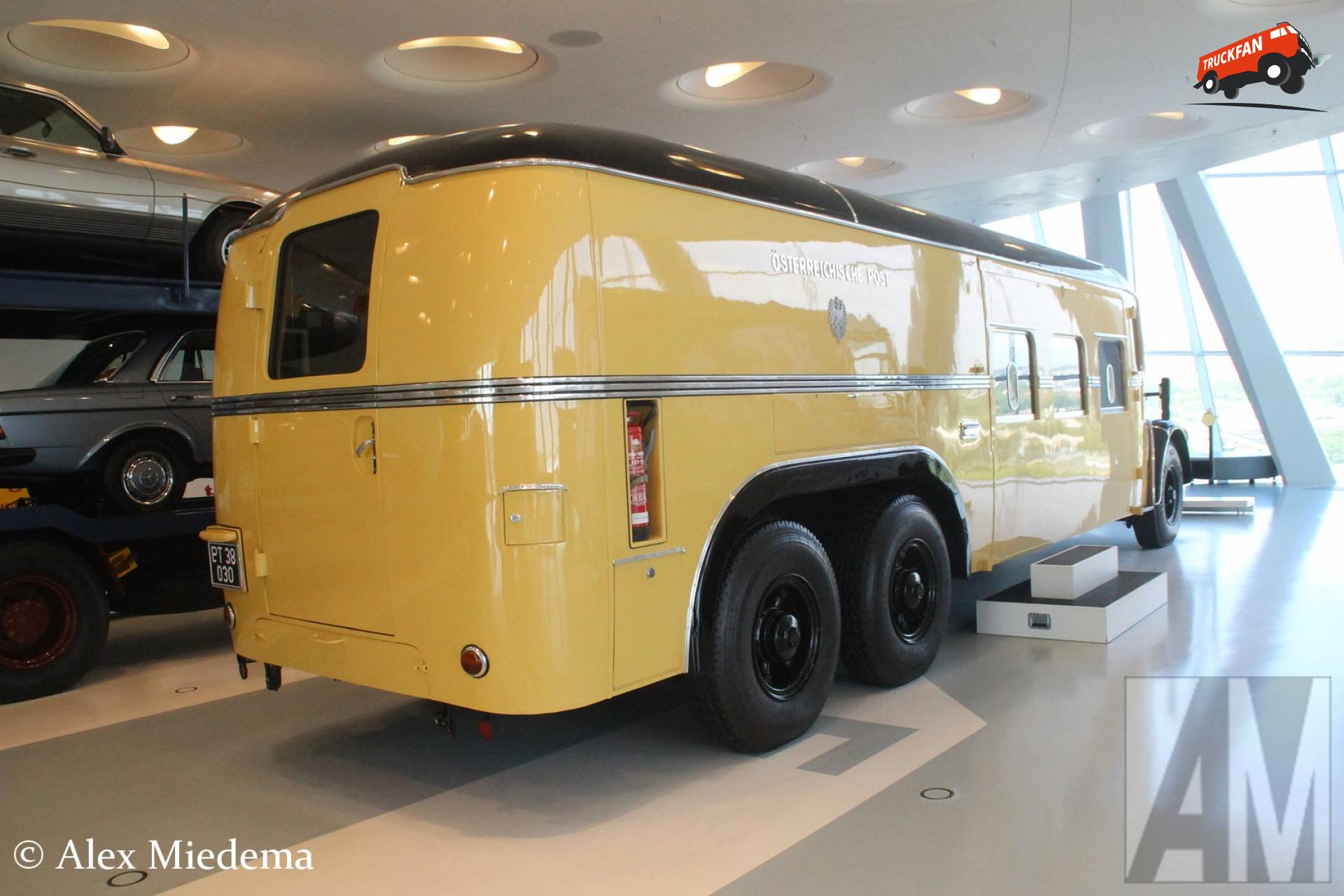
Post it:A letter box with a shiny polished metal flap, customer counters for buying stamps or sending parcels – and also the option of sending telegrams: this O 10000 Mercedes-Benz bus was in service with the Austrian Post until the 1970s. It was originally built in 1938 as a long-distance bus. In its subsequent use as a mobile post office, numerous individual solutions made it possible to offer the complete range of services of the state-owned Austrian post and communications service provider on a temporary basis, all in one place.
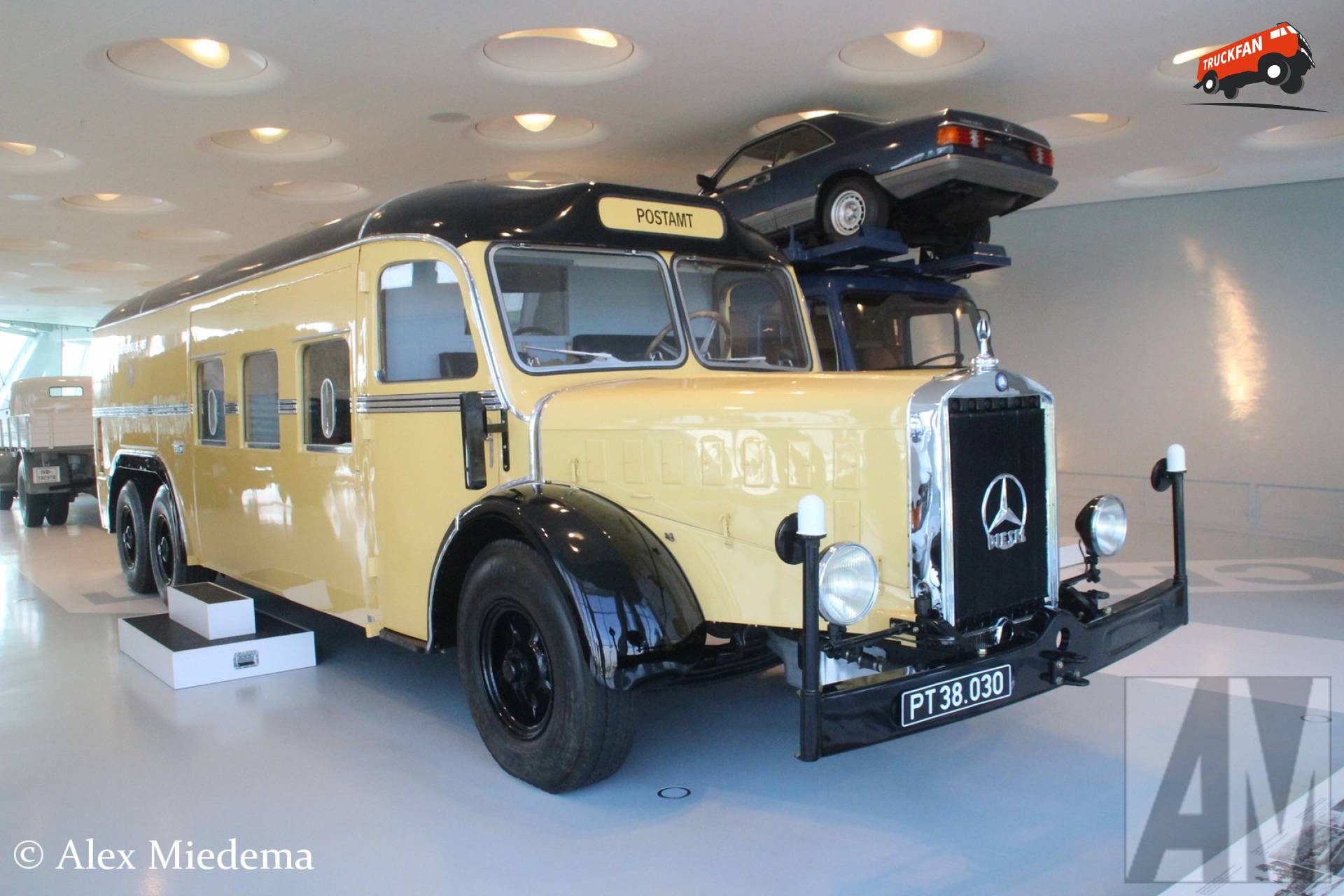
Stage: This impressive vehicle with its mighty radiator and three axles was used, for example, at cultural events such as the Salzburg Festival. With its fine paintwork and gleaming coat of arms, it almost became something of a performer itself at such events. Less glamorous was its use as a makeshift post office in some rather more mundane locations. Today, the O 10000 can be experienced in the Mercedes-Benz Museum, in Collection Room 2: Gallery of Carriers.
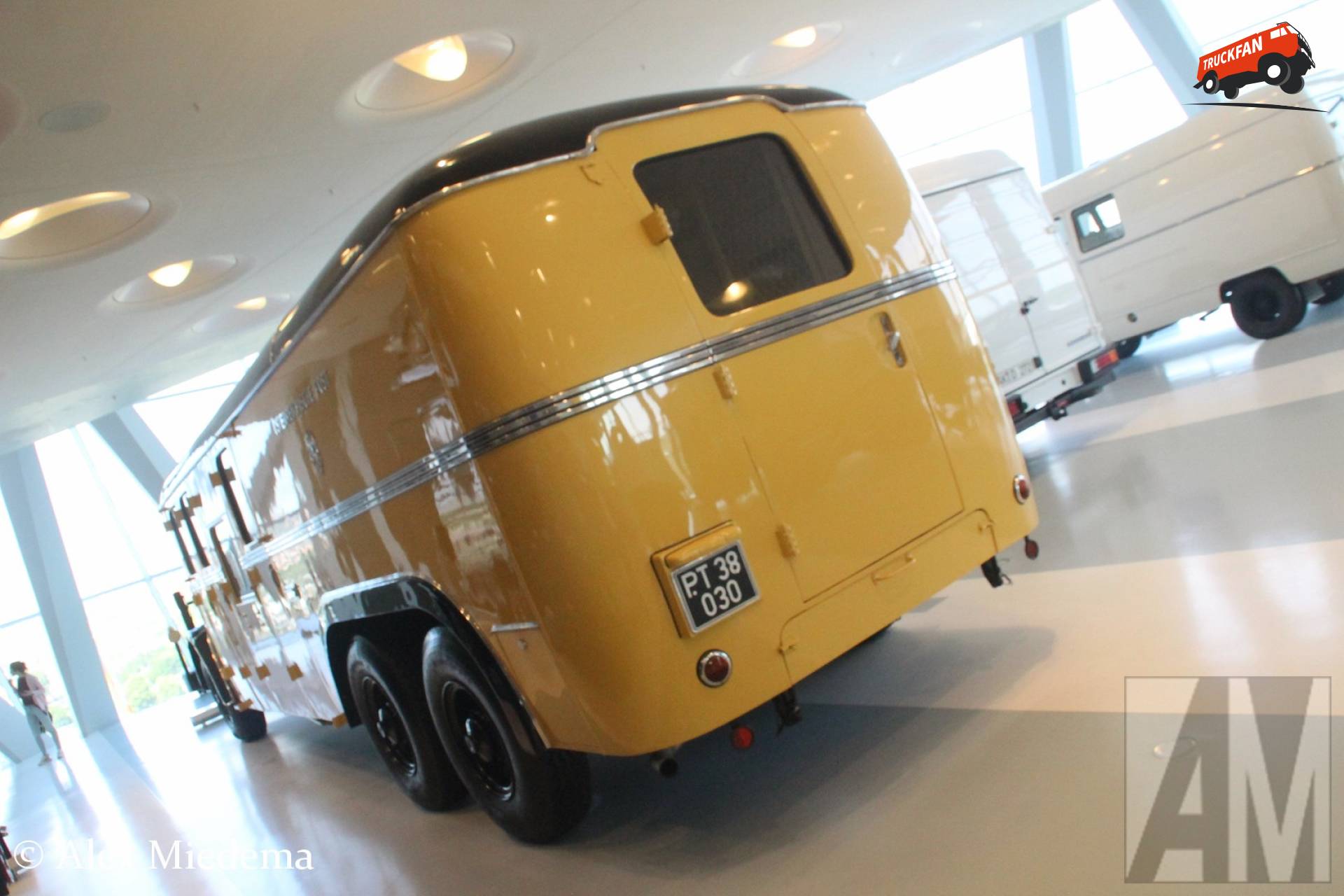
Journey:The O 10000 was the largest bus to be built by Mercedes-Benz in the 1930s. Mercedes-Benz presented its chassis at the International Automobile and Motorcycle Exhibition in Berlin (IAMA) from 15 February to 1 March 1936. Steel bodies – some also in a lightweight design – as city or long-distance buses were supplied by the Mercedes-Benz plants in Gaggenau and Sindelfingen.
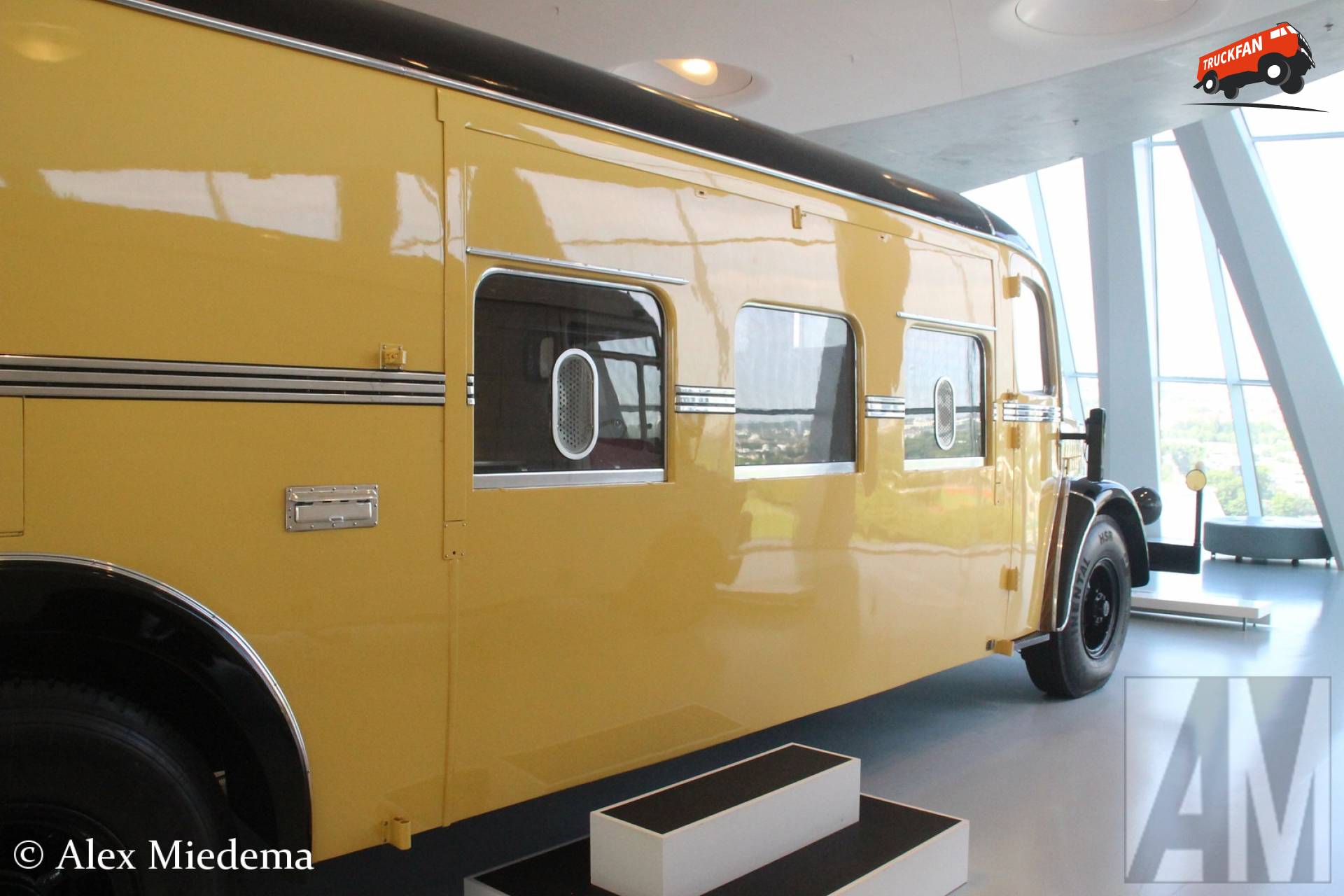
Powered post:In Germany and Austria, the buses, which could reach speeds of up to 65 km/h and were around 14 metres long, were also used by the postal service for scheduled long-distance transport – the so-called “powered post”. After the Second World War, the Austrian Post converted the bus for the first time. The O 10000 then operated as a parcel carrier on the route between Vienna and Salzburg. A further conversion, probably in the 1960s, finally gave rise to the mobile post office. It opened its counters again and again at different locations until the end of the 1970s. Thus, the bus continued to be used in a very sustainable way and for three different functions over four decades.
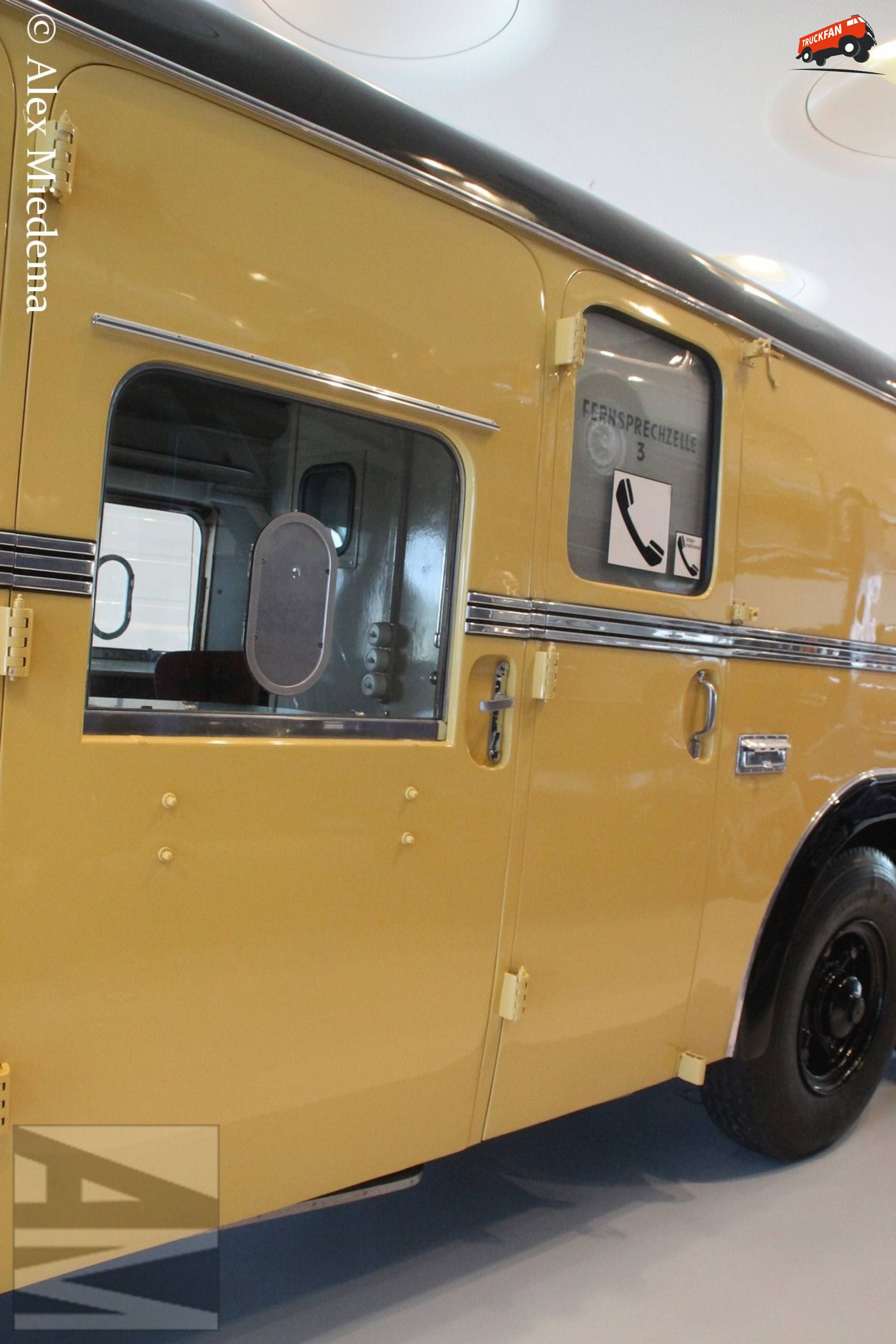
Long-distance call:A quick call home to rave about your visit to the opera or this yearʼs performance of “Jedermann” in Salzburg? Today, you just whip out your smartphone. In contrast, 50 years ago, mobile telephony in everyday life was still a vision of the future. Thatʼs where a service from the mobile post office came in handy: it offered three “telephone booths”. The cabins were located on the left-hand side of the bus, behind solid-looking doors integrated flush into the body. In each of the rather prosaic boxes was a black rotary-dial telephone on a small table screwed to the wall. The connecting cables of the telephones disappeared into the wall. Particularly relevant for locations with a global standing at that time was perhaps the cabin sporting the number 3: according to the inscription on the frosted glass panel, international long-distance calls could be made from it.
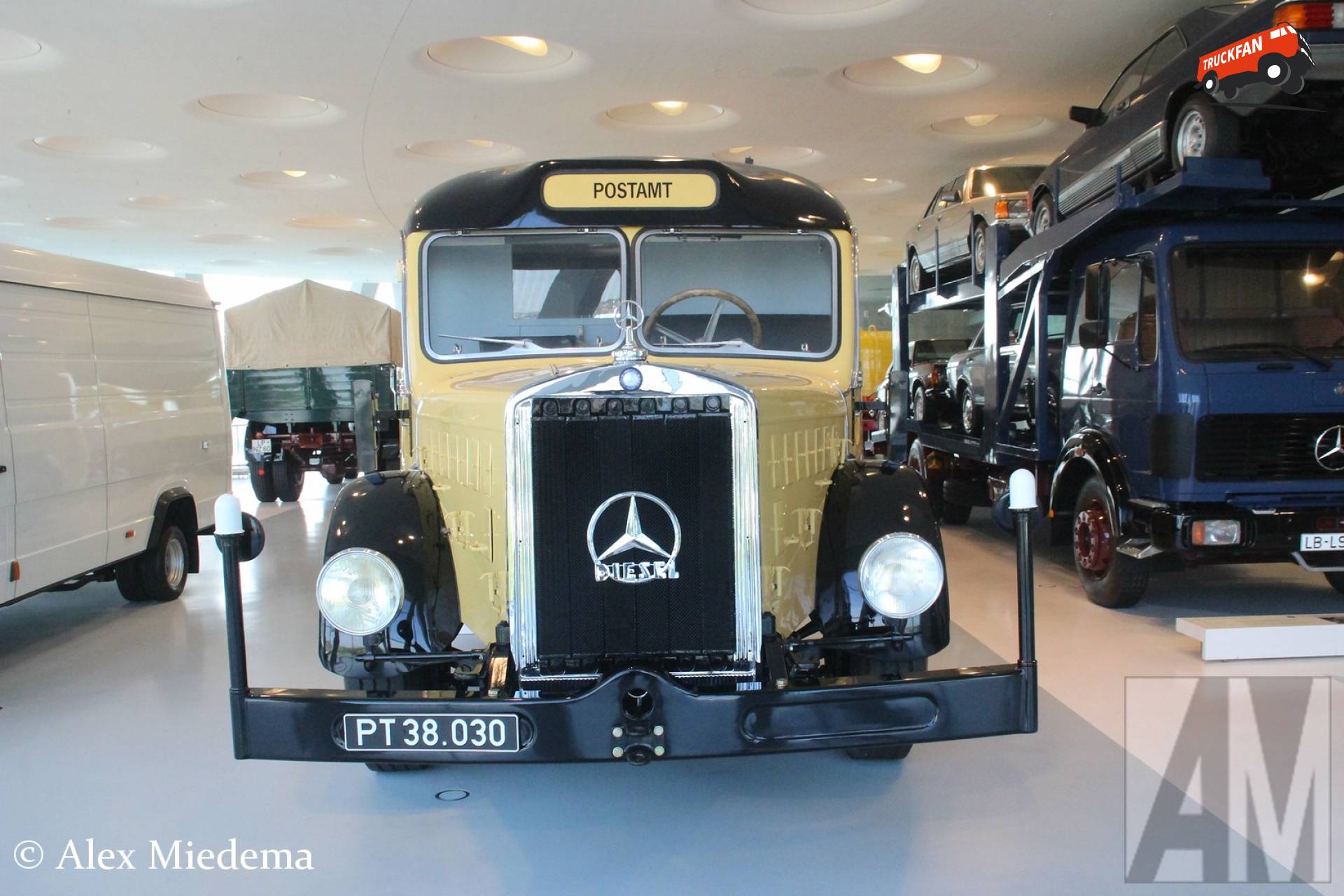
Size: The O 10000 was suitable for subsequent use as a parcel carrier and later as a post office on wheels because of its generous dimensions. As a bus, it offered space for up to 60 passengers in the late 1930s. Its engine is also big. The OM 57 six-cylinder diesel engine delivers 110 kW (150 hp) from a mighty 11,197 cubic centimetres of displacement. The power unit is located under the vehicleʼs elongated bonnet. On the front bumper there are two guide rods with round rear-view mirrors. These made it easier to manoeuvre the long and heavy bus – an important aspect, e.g. in case of narrow set-up locations for major events.
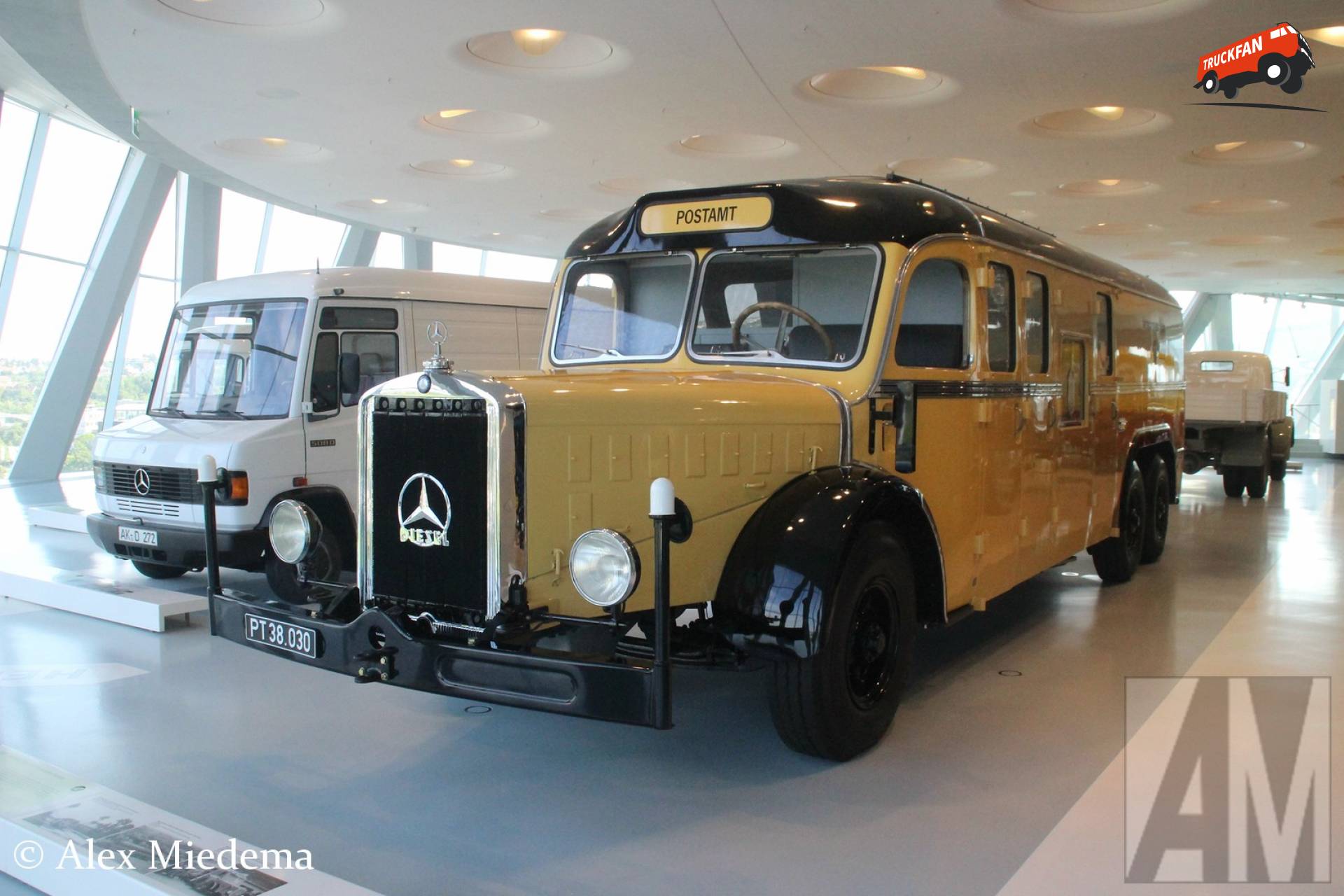
Eye level: The differing position of the high windows of the telephone booths and of the much lower windows of the post office counters is striking. This configuration made the latter more convenient to reach for post office customers, who were presumably standing on a platform. This is made possible by a trick in the interior design: the counter clerks who accepted letters, telegrams and parcels did not sit on conventional office furniture. Instead, sliding seats are attached to the floor of the interior, and there are recesses for the clerksʼ legs in front of them. The challenge of providing a writing facility for customers was also cleverly solved: a desk flap on one side wall can be folded outwards for this purpose. The integrated lighting with three small lamps was particularly convenient.
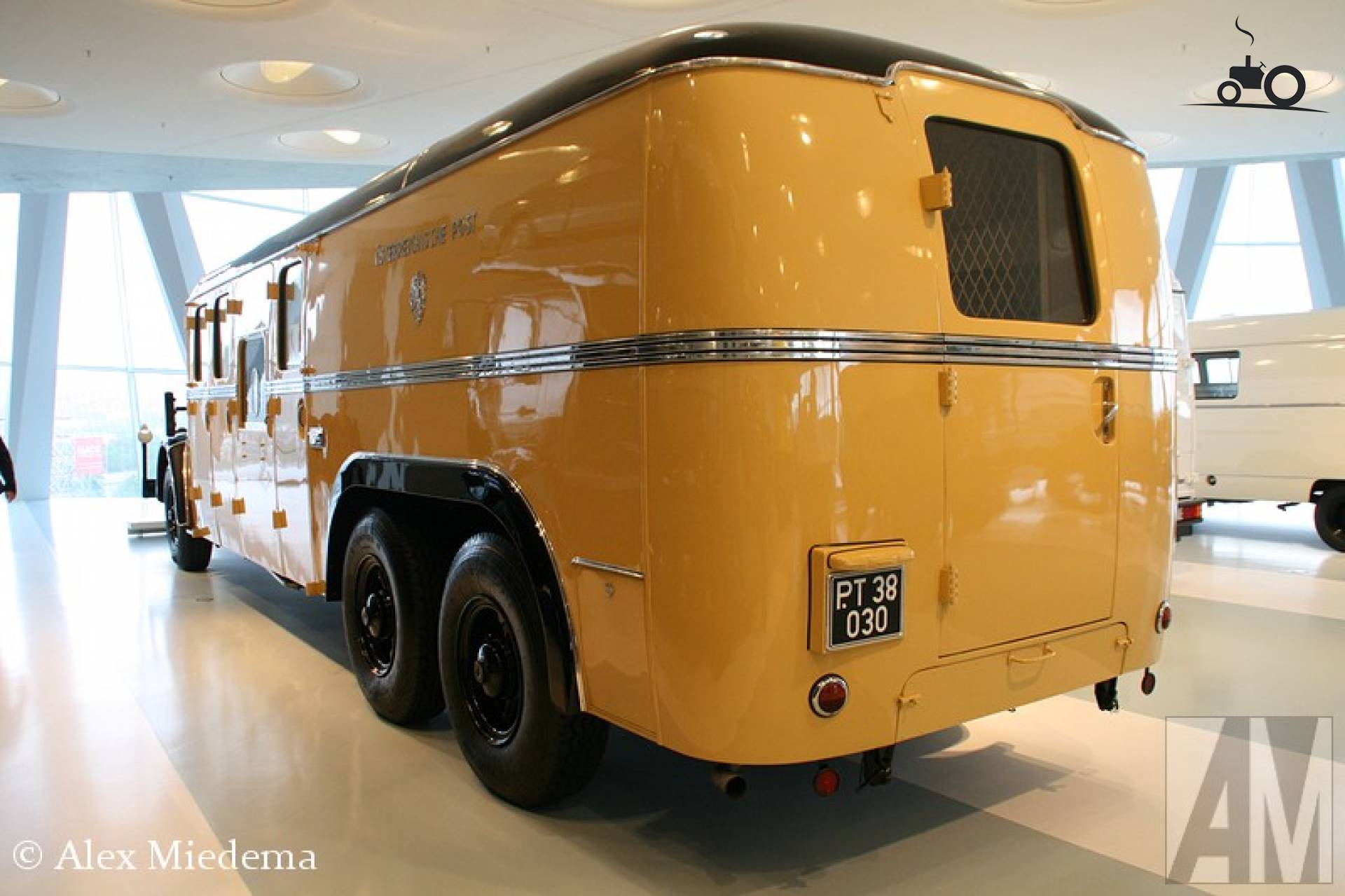
Order: Incoming post was obviously pre-sorted immediately. A shelf in the interior with the corresponding compartments is a reminder of this. Post bags were available for further transport. They were attached to a pole with clamps and filled with post. Aids such as snow chains, tools and fire extinguishers were also stowed according to clear rules.
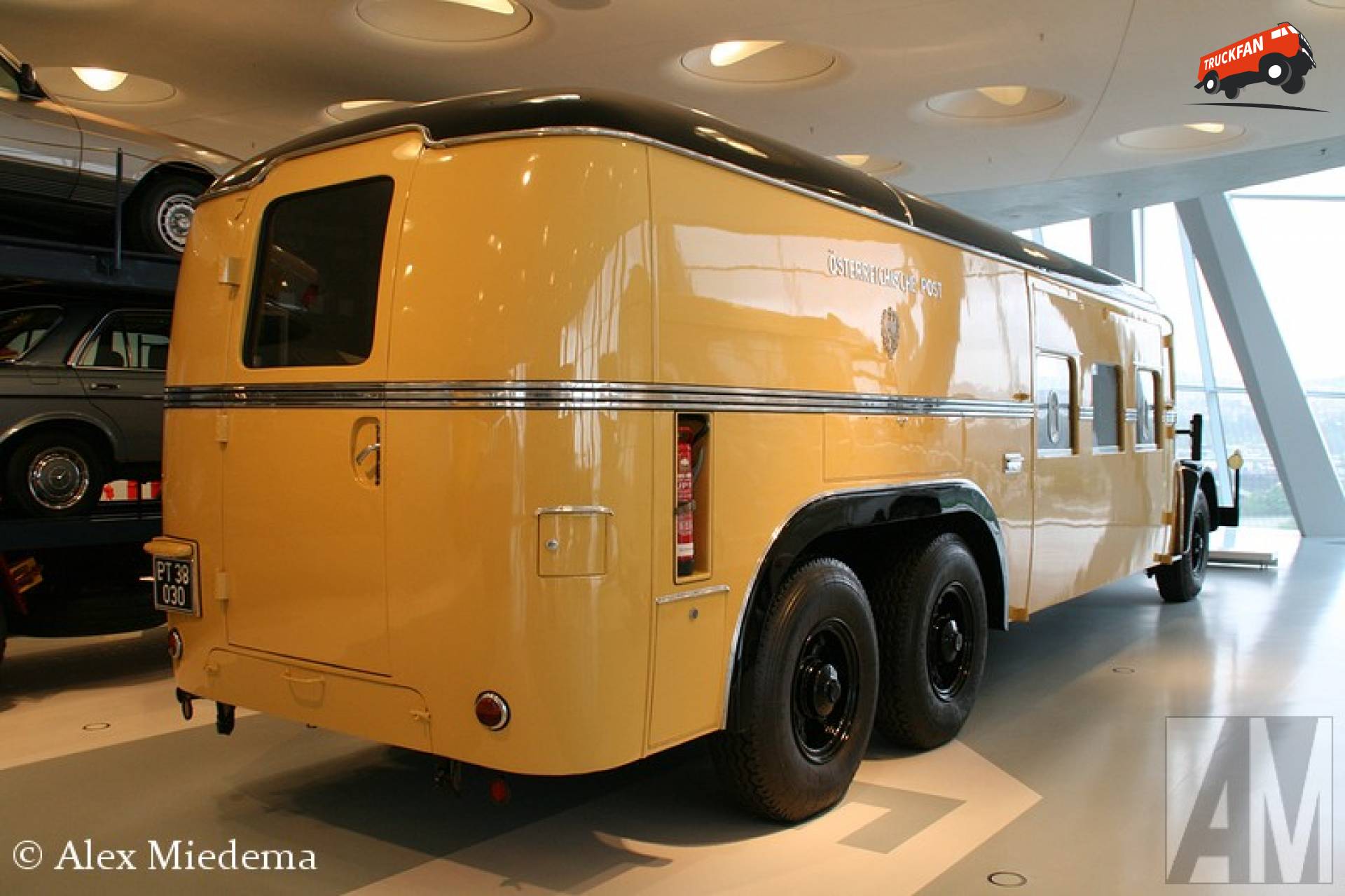
Comfort:For the staff on board there is a refrigerator and a hand basin, among other things. The post office did not have air conditioning. However, fresh air was supplied during operation in warm weather through a screen door at the rear. This also secured the post office against unauthorised access.
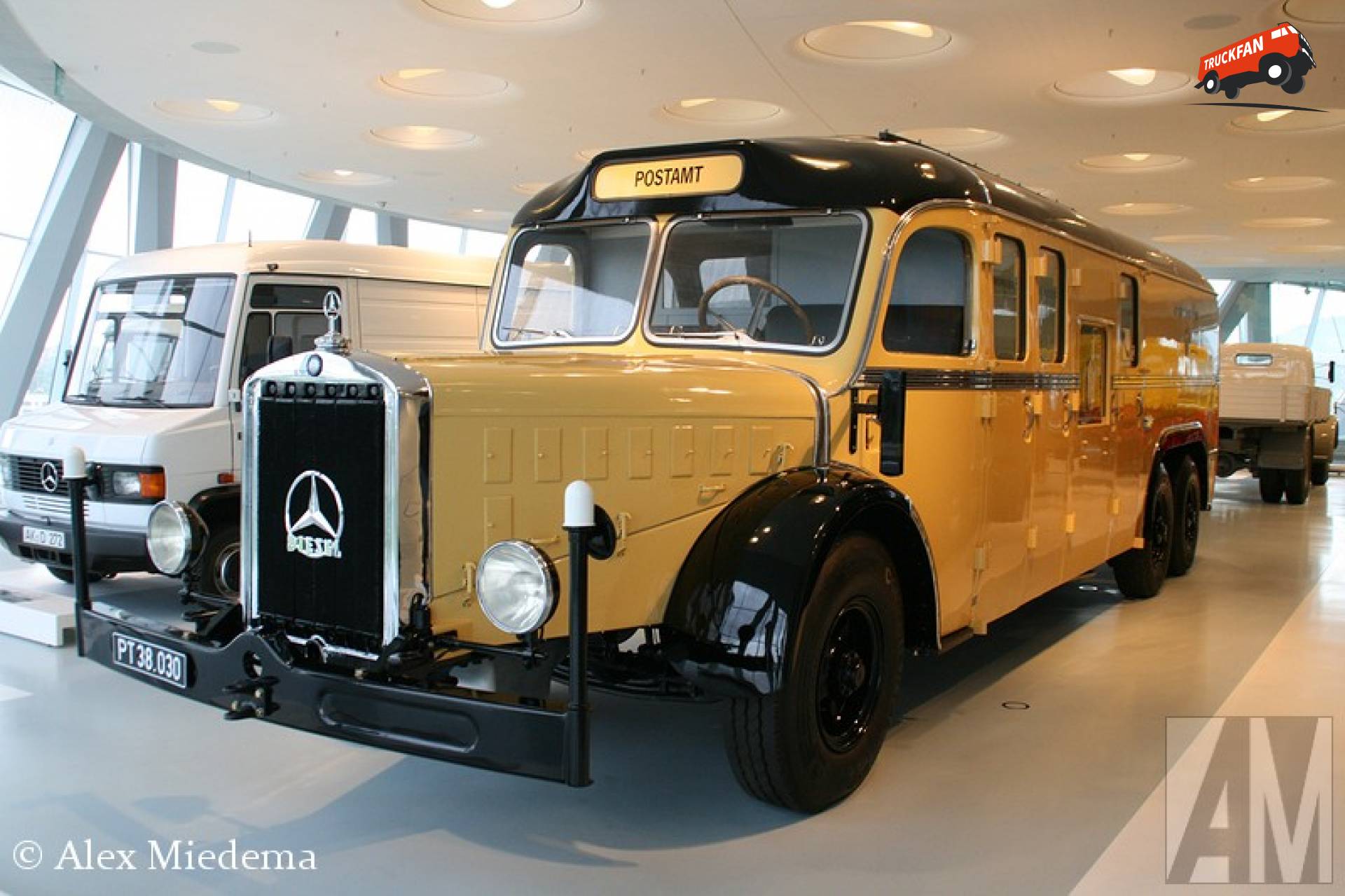
Tradition:The O 10000ʼs livery in yellow and black refers to European postal history – these are Imperial colours. In the late 15th century, Maximilian I, a member of the Hapsburg dynasty, bestowed them on the House of Thurn und Taxis as its emblem. The Thurn and Taxis noble family were to take over the postal service in the Empire. In 1615, they were appointed Imperial Postmasters General. To this day, postal vehicles in various European countries are painted in shades of yellow – and often have a Mercedes star on the front.
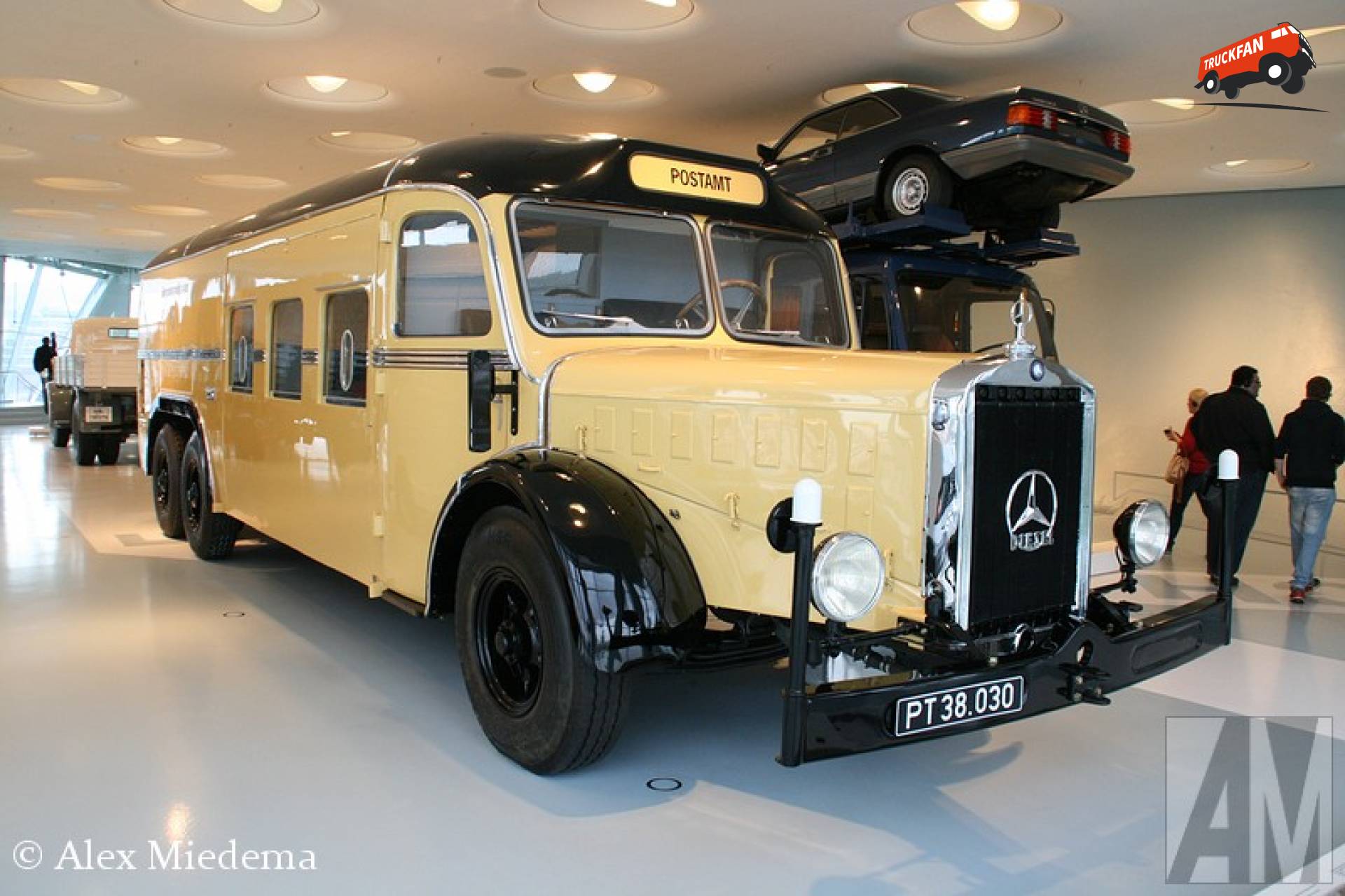
Tekst Daimler Truck AG.
